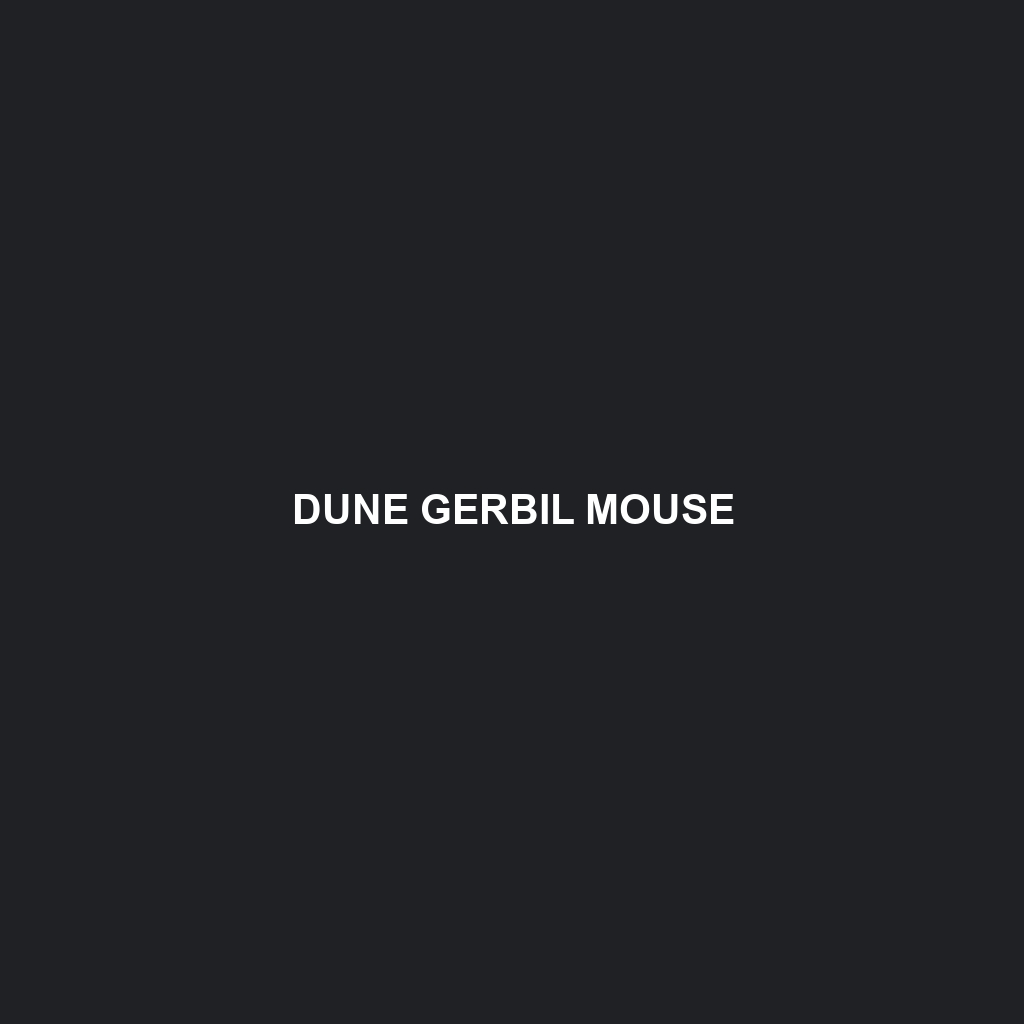Common Name: Dune Gerbil Mouse
Scientific Name:
Habitat:
The Dune Gerbil Mouse is primarily found in arid and semi-arid environments, particularly in sandy deserts and dunes of North Africa and parts of the Middle East. This species thrives in areas with loose sand where it can burrow and establish its home, making it well adapted to its harsh surroundings.
Physical Characteristics:
The Dune Gerbil Mouse typically measures about 10 to 12 centimeters in length, not including the tail. This small rodent has a soft, sandy-colored fur that provides excellent camouflage against its desert environment. Its large, rounded ears and long, tufted tail are distinctive features that aid in heat dissipation and balance while navigating sandy terrain.
Behavior:
Dune Gerbil Mice are primarily nocturnal, emerging at night to search for food and socialize. They are known for their burrowing behaviors, creating extensive tunnel systems that provide shelter from the daytime heat and predators. These mice exhibit a range of social behaviors, often living in small family groups.
Diet:
The diet of the Dune Gerbil Mouse consists mainly of seeds, leaves, and various desert vegetation. They are granivorous, meaning they possess a preference for seeds which they store in their burrows for later consumption. Their foraging habits are vital for the seed dispersal of many desert plants, contributing to the ecosystem’s health.
Reproduction:
Breeding for Dune Gerbil Mice occurs during the warmer months, typically from late spring to early autumn. The female gives birth to a litter of 3 to 6 offspring after a gestation period of about 25 days. Young mice are weaned after approximately 3 weeks and start to explore their surroundings shortly thereafter, learning survival skills from their parents.
Conservation Status:
Currently, the Dune Gerbil Mouse is categorized as least concern by the International Union for Conservation of Nature (IUCN). However, habitat loss due to human encroachment poses a potential threat, which necessitates ongoing monitoring of their populations.
Interesting Facts:
One fascinating aspect of the Dune Gerbil Mouse is its ability to conserve water, allowing it to thrive in arid climates where water is scarce. Additionally, it has adapted to create intricate burrow systems that not only protect it from predators but also maintain a stable microclimate within the extreme heat of the desert.
Role in Ecosystem:
The Dune Gerbil Mouse plays a crucial role in its ecosystem as a seed disperser and as a prey species for various predators, including snakes and birds of prey. Its burrowing activities help aerate the soil and promote plant growth, while its presence contributes to the balance of desert food webs.
